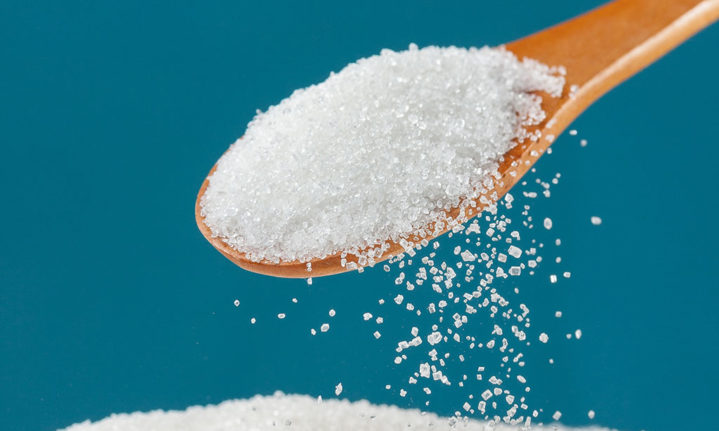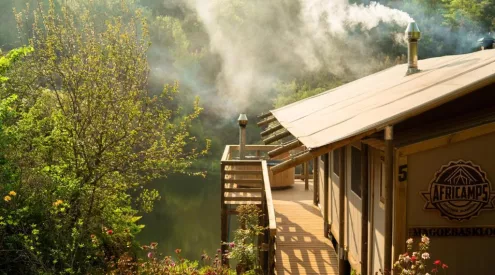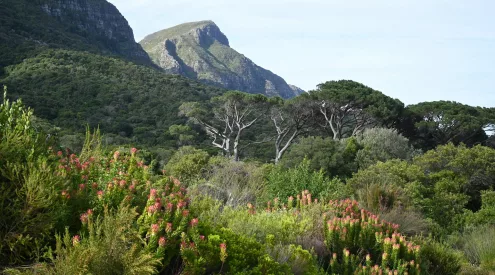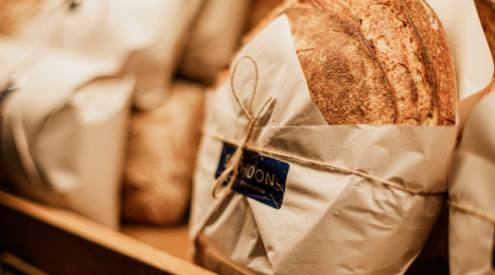It’s formally afrikaans but colloquialised in all our South African languages. Lekker means good, well, happy, content. It also means sweet, like canoy. Before the time of allsorts and wotalotigot, these were handmade confectionaries. It’s a dying art, but there are still places in South Africa dedicated to creating ’lekker’, the right way. lduzel Lombard Steyn hits the sweet spot.
Photography: Sandra Uys, Honest Chocolate, Lisa Mainz, Visionary Delights, Istock Photography

Candyman store owner, Henco Uys, sweetens up his customers in Parys.
My great-grandmother Ouma Tok was a renaissance woman of the Karoo. In our home hangs her still life paintings and in our pantry, her collections of hand-written recipes are canonical compositions, completely ahead of their time. Among her long list of accolades, my great Ouma Tok was also a master of sugar.
Bending sugar to your own will is an art form. These days, I’m often spellbound by Facebook videos that show how candy is made and stretched and hardened and moulded to produce sweets. Back in the day, Ouma Tokkie could mesmerise us great-grandkids in the same way. For Christmas, she’d make candy canes with white and red stripes. She always had home-made hard candy preserved in a dusting of corn starch in a small tin in her handbag and home made Turkish Delight on the mantelpiece. She also baked and designed personalised wedding cakes for each of her grandchildren, adorned with the most delicate and lifelike sugar flowers. I’m yet to see sugar work as beautiful as the lilies and pansies she used to create from home-made sugarpaste.
From reeds that are burnt and then pressed for their sap. In Hluhluwe in the northern parts of KwaZulu Natal, pure sugar cane is often sold at the side of the road as a snack. It tastes a bit like raw sweetcorn, but sweeter. From there, it’s processed to create various forms, including the granulated kind present in 99% of all South African households.
It’s this 2.5kg bag that can take you places. Heated to 100°C, white sugar settles to what’s known as ‘soft ball stage’, a state of limbo used to make toffees and lekkers such as fudge, fondant, jam or nougat. Push it a little further to ‘hard ball stage’ at 130°C and you have the crackling candy coating a toffee apple, the cloud of a croquembouche, or those magical candy canes my Ouma Tok used to make.
She used to listen to the sounds of the sugar bubbles popping to know when her sugar was ready to be moulded. A fast-paced ‘prit-prit-prit’; would signal a good consistency for the old-school tameletjie, for example. Nowadays, chefs have candy thermometers to know these things.
Tameletjies are the ultimate South African lekker. Lekker is derived from lek meaning ‘to lick’, and tameletjies are best for licking – the ultimate sweet. It’s one of the oldest confections in South Africa, made of pure sugar that’s been caramelised to that sweet spot just on the brink of bitterness. The Malay settlers in the Cape were the first to populariseit. The sugar came from the KZN coastline where vast plantations of sugar are still cultivated today. Although sugar was a relatively expensive commodity at the time, the tameletjie was the only ‘sweet’ the early settlers had or were able to make from scratch, so it took off.
As it became more popular, it was adopted in different cultures which resulted in variations, including the addition of other ingredients such as pine nuts and almonds. Throughout the years, more ingredients were added to the simple sugar solution that makes our hearts sing. Most popular of which is certainly cacao and cream to produce chocolate and caramel, respectively. From there, it morphed and moulded and transformed – just as sugar does – into a multitude of South African lekkers we know and love today. There are a few sweet spots in South Africa still dedicated to creating lekker, from scratch.
Old School Cool
Candyman
This candy store in the main road ofParys is a throwback to the sweets of your childhood, including all the classics like peanut clusters, Chappies, multicoloured coconut ice, Wilson Toffees and rocky roads. The candies are displayed in glass jars and wooden crates and customers get to pick out as much as they want and pay per weight.
Candyman belongs to SA athlete Henco Uys, who started the business with his mom, Sandra, when he was still in school and diagnosed with Scheuermann’s disease. Henco has since recovered fully and his Candyman shop has also grown from strength to strength, expanding to double its footprint in 2019.
Many of the candies for sale in Candyman are from Dicks Sweets in Gauteng, a family business that’s been operating since 1938.
056 817 7814
Where: 74A 8ree St,Parys, Free State

Chocolate Fantasy
Honest Chocolate Cafe
This hole-in-the-wall haunt in Wale Street is a chocolate lover’s dream and indulgent escape in the heart of the Mother City. Co-founders Anthony Gird and Michael de Klerk swear by making chocolate using only quality, organically-sourced ingredients.
The Chocolate Cafe has a sunny outside courtyard where the Secret Gin Bar opens during the evenings. During the days, the cosy inner cafe always smells like a hot pain au chocolat thanks to, well, hot pain au chocolat as well as classics like their sinfully delicious banana bread bunny chow and famous vegan coconut dream shake, served to patrons at quaint tables on the kerbside.
All the cafe treats and chocolate bars are made in the nearby Woodstock Kitchen, which also hosts Honest’s Bonbon Workshops.
076 765 8306
Where: 64A Wale Street, Cape Town, Western Cape

Taste of summer
Amabula Bula lalliea
The official taste of the South African summer is undoubtedly those granadilla lollies sold by vendors all along our beautiful beaches. The man who started it all is Mr Adolf van Taak, aka Oom Bula. Oom Bula used to be the policeman in Jeffreys Bay and started his Amabula Bula business in 1999. It was rough in the beginning, he remembers. ‘We’d drive to the beach in an old beach buggy with a cooler box. When the ‘lollies’ were sold out, we’d have to drive back home to fetch another cooler box, only to find there was no more parking at the beach, and we’d have to walk kilometres to get back to the main beach!’
He branched out (of his residential home) in 2015 but each granadilla lollie is still made by hand, according to his tried and trusted recipe. ‘They’re not the kind of Iallie where you suck out all the juice and are left with just a ball of ice,’
Adolf says.
The Amabula Bula franchise has since spread to beaches from East London to Cape Town and, most recently, the Durban coastline.
072365 3882
Where: Dolphin Beach (Main Beach), Jeffreys Bay, Eastern Cape (or at any self-respecting South African beach along our 2 500km coastline)

Candy Cloud
Visionary Delights
Memories of childhood often feel as if they’re wrapped in clouds… freshly-spun cotton candy clouds to be exact. Every self-respecting small-town agricultural fair, church fete or school entrepreneur’s day is marked with the smell of cotton candy; the smell of sugar caramelising and cooling off rapidly to produce angel hair-like strands of spun sugar, caught on a stick. The best kinds don’t advertise, obviously, but are often found travelling with the fetes and festive season fairs. A rare constant is found at the Pretoria Boeremark at Visionary Delights, run by Coetzer and Lenie Swart.
The Swarts hold the unofficial world record for the Biggest Cotton Candy on a Stick, achieved at the Bloem Show last year. They pride themselves on making larger-than-life cotton candy creations.
082 990 8985
Where: Pretoria Boeremark, Silverton, Gauteng (or at national shows, fetes and fairs)

Sweet Truths
A new spice
It is widely believed that sugar cane was first used by man in Polynesia and it quickly spread to India. The Persians adopted it after their invasion of India in 510 BC and subsequently the Arabs invaded Persia and learnt how sugar was made. After the Crusades of the 11th Century, sugar found its way to Europe where it was described as a new ‘spice’.























